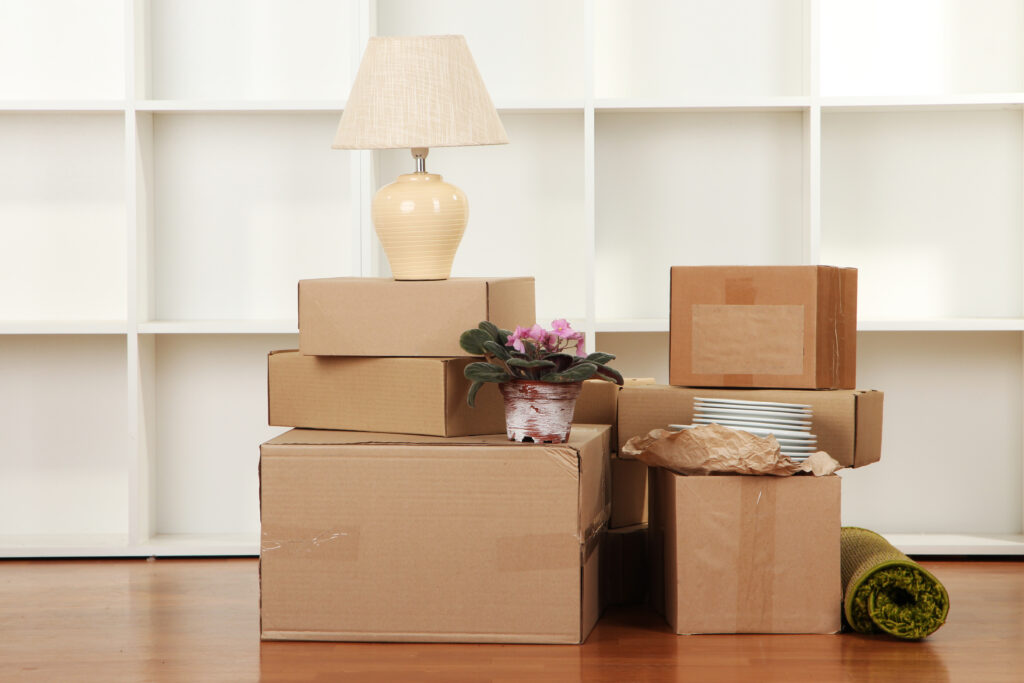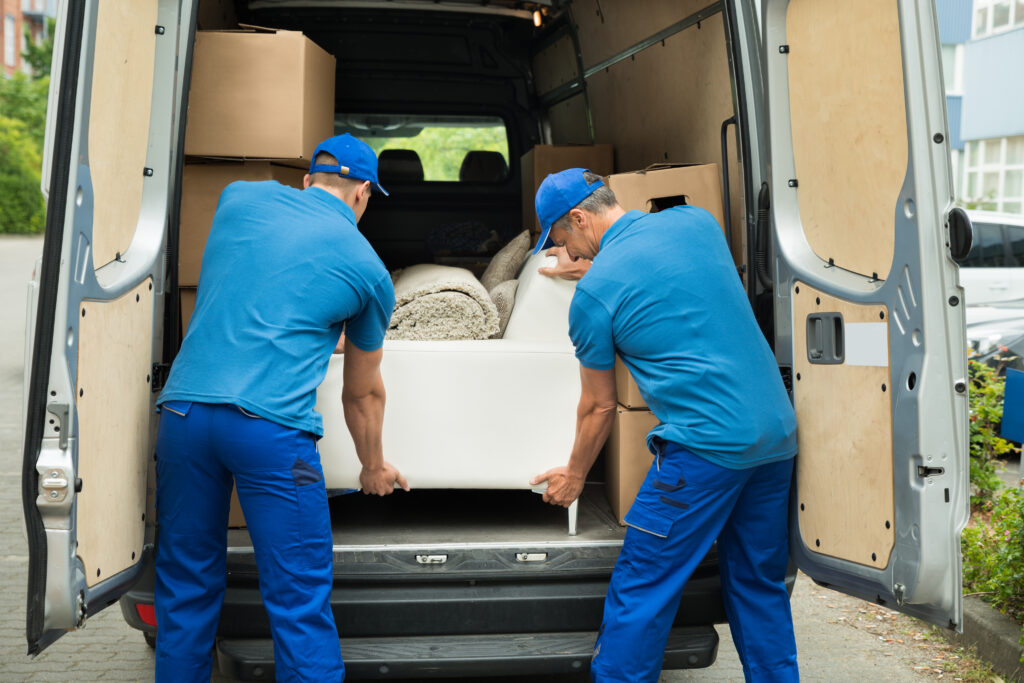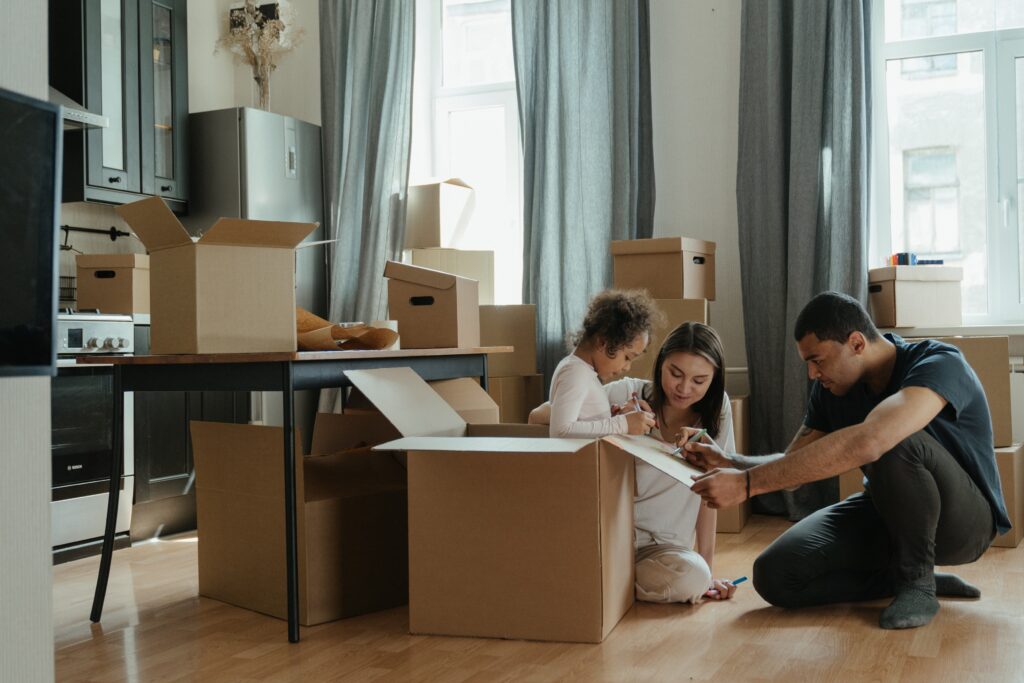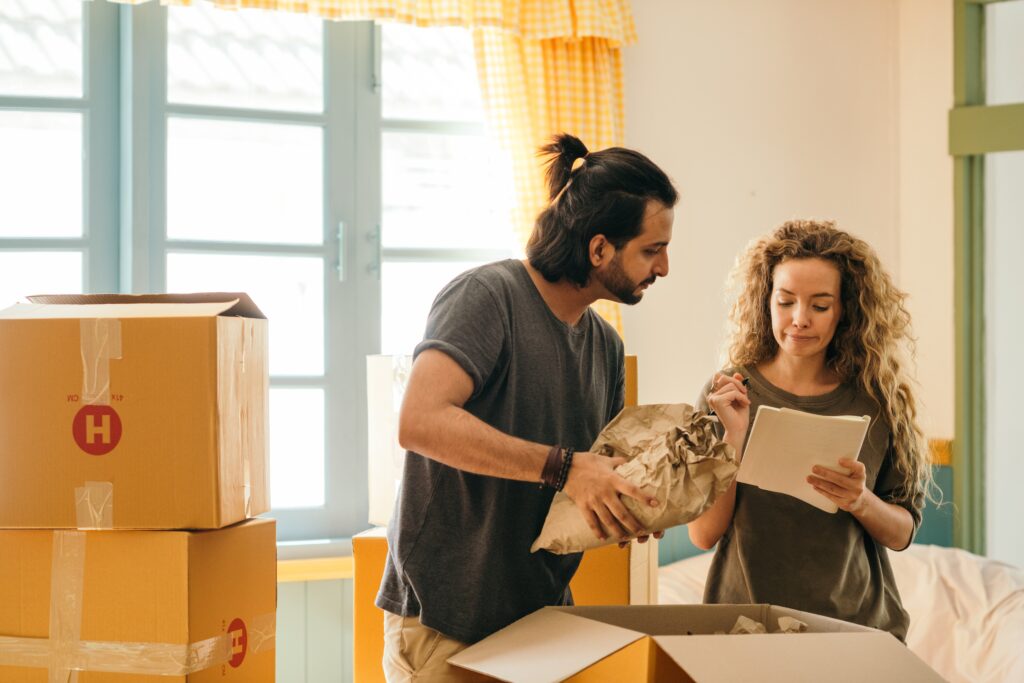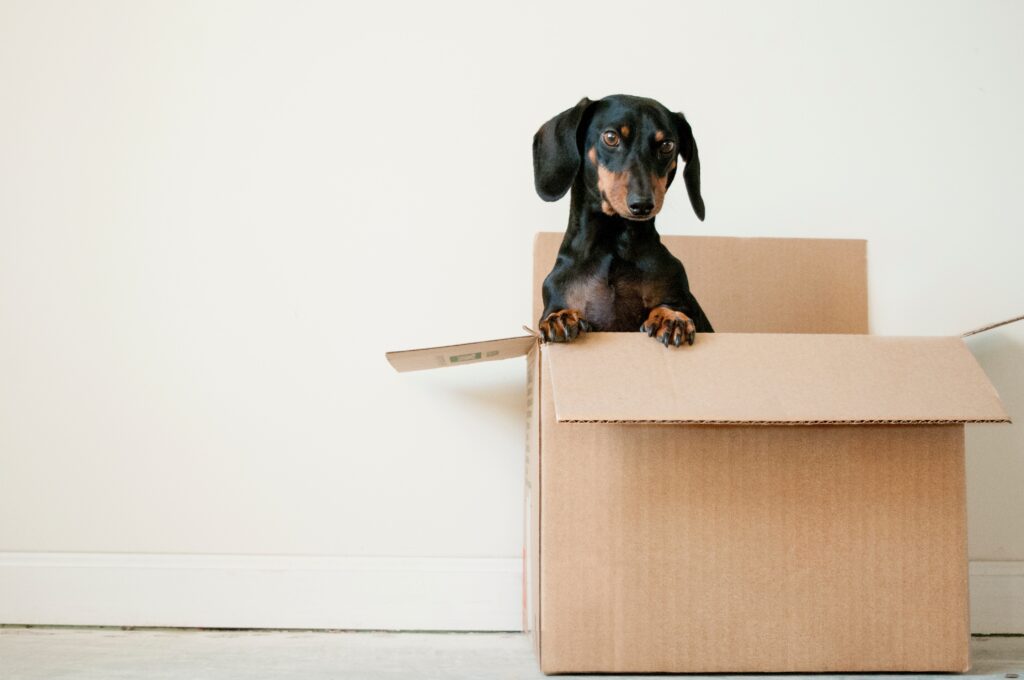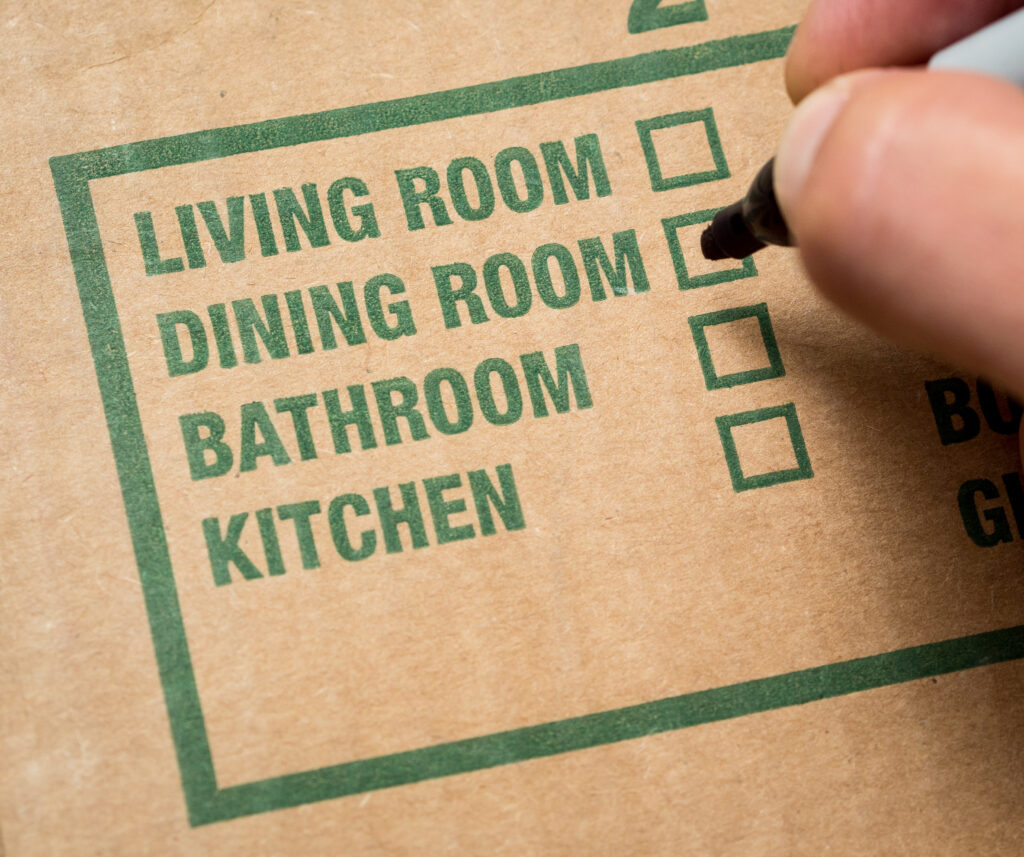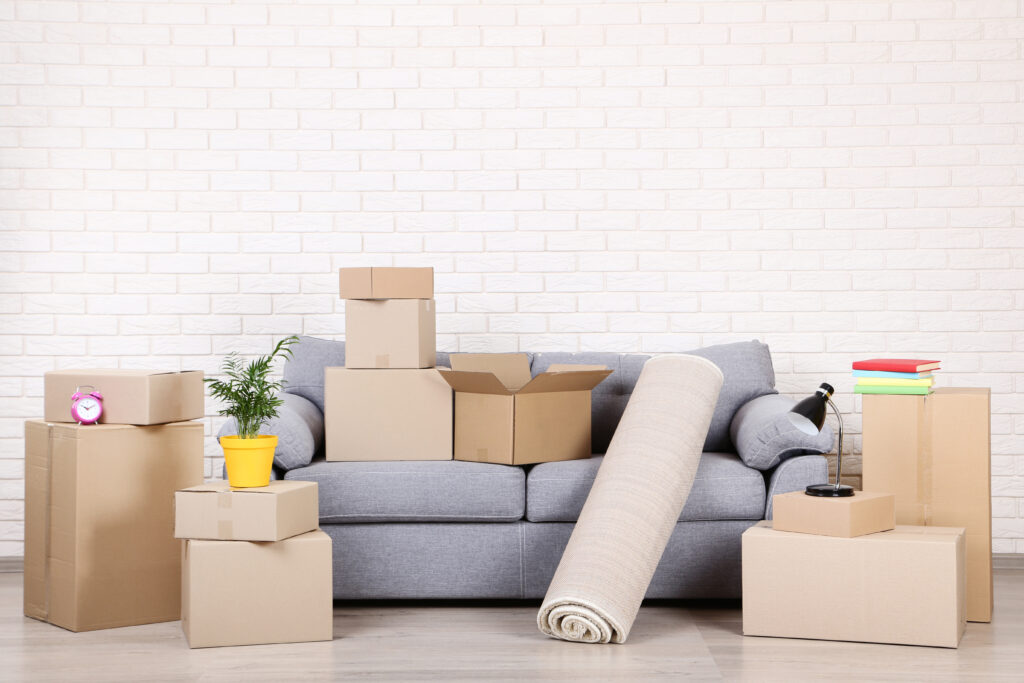Moving can be an overwhelming and chaotic experience if not properly planned and executed. However, with the right moving tips and hacks, you can turn your relocation into a smooth and efficient process. In this comprehensive guide, we will walk you through various aspects of moving, offering expert advice, actionable tips, and creative hacks to make your move as stress-free as possible. From the initial planning stages to settling into your new home, we’ve got you covered. Let’s dive in!
Table of Contents
#1 Packing Tips
Packing is a crucial aspect of any move, and proper packing techniques can save you time and minimize the risk of damage to your belongings. In this section, we will share some valuable packing tips to ensure your items are well-protected throughout the moving process.
Start Early, Make a Plan, and Prepare
Packing can be a time-consuming task, so it’s important to start early. Begin by creating a packing plan that outlines which rooms or areas you’ll tackle first. This will help you stay organized and prioritize the packing process.
Before you start packing, gather all the necessary packing supplies. This includes sturdy boxes in various sizes, packing tape, bubble wrap, packing paper, and markers for labeling. Having everything on hand will make the packing process more efficient.
Before packing, take the opportunity to declutter your belongings. Sort items into categories such as keep, donate, or sell. This will not only reduce the number of items you have to pack but also make your new space feel more organized from the start.
Pack Room by Room
To stay organized, pack one room at a time. Start with the rooms you use less frequently, such as spare bedrooms or storage areas. Clearly label each box with the room it belongs to and a brief description of its contents.
#2 Decluttering Your Home
One of the most important moving tips is to declutter your home before you move. Streamlining your belongings not only reduces the packing load but also allows you to start fresh in your new space. Learn how to efficiently declutter and make the most of this opportunity for a fresh start.
Take Inventory
Assess your belongings and assess their value and significance to you. Ask yourself if each item is worth the effort and cost of moving. Donate or sell items that no longer serve a purpose or hold sentimental value.
Donate or Sell Unwanted Items
Consider donating gently used items to local charities or hosting a yard sale to sell unwanted belongings. This not only reduces the number of items you need to pack but also benefits others in need.
Digitize Paperwork and Minimizes Duplicates
Reduce clutter by digitizing important paperwork and sentimental photos. Scan important documents and save them securely on your computer or in the cloud. Similarly, digitize old photo albums to save space while preserving cherished memories.
Identify duplicate or unnecessary items in your home. For example, if you have multiple kitchen gadgets that serve the same purpose, consider keeping only the ones you use regularly. Streamlining your belongings will make the packing and unpacking process more efficient.
#3 Car Moving Tips and Hacks
Plan Ahead
Start by creating a detailed plan for your journey. Determine the most convenient and scenic routes, taking into account factors such as distance, road conditions, and traffic. Plan for rest stops and overnight stays along the way to avoid driver fatigue. Make reservations for accommodations in advance to secure the best deals.
Prepare Your Vehicle
Before hitting the road, give your car a thorough inspection and ensure it’s in good working condition. Check the tires, brakes, fluids, and lights. If needed, schedule a maintenance service to address any potential issues. It’s also a good idea to take pictures of your car’s current condition for insurance purposes.
Whether you’re driving or using a transport service, it’s important to remove all personal belongings from your car. Not only does this prevent potential theft or damage, but it also helps reduce the weight of your vehicle and makes the inspection process easier.
Notify Your Insurance Company
Contact your insurance provider and inform them about your upcoming move. Confirm that your car insurance coverage is valid across state lines and during transportation. Consider purchasing additional coverage if needed, especially if you’re using a transport service.
Research Auto Transport Services
If you choose to use a professional auto transport service, do thorough research before selecting one. Read reviews, compare prices, and inquire about their insurance coverage and delivery times. Choose a reputable and licensed company to ensure the safe transportation of your vehicle.
Document the Condition of Your Car
Before handing over your car to a transport service, take detailed photographs or videos to document its current condition. This moving tip will serve as evidence in case any damages occur during transportation. Make sure the transport company also conducts an inspection and provides you with a copy of their assessment.
#4 Finding Reliable Movers
Choosing the right moving company is vital for a successful move. In this section, we will guide you through the process of finding reliable movers who will handle your belongings with care and provide excellent service. Discover the key factors to consider and how to conduct thorough research to ensure you make the best choice. This may not be the most “exciting” moving tip but it is crucial for your smoothest move possible!
Research Moving Companies
Start by researching moving companies in your area. Look for companies with positive reviews and ratings, as well as those that specialize in your type of move (local, long-distance, or international). Create a shortlist of potential movers to consider. It is especially important to research companies that will be moving your car and other extra valuable items.
Check License, Insurance, and Request Quotes
Verify that the moving companies on your shortlist are properly licensed and insured. Legitimate moving companies will have the necessary licenses and insurance to protect your belongings during the move. You can usually find this information on their website or by contacting them directly.
Reach out to the moving companies on your shortlist and request quotes for your specific move. Provide detailed information about the size of your move, any additional services you require, and the locations you are moving from and to. Compare the quotes to determine the most reasonable and competitive pricing.
Read Reviews and Ask for Recommendations
Take the time to read reviews and testimonials from previous customers of the moving companies you are considering. Look for feedback on their professionalism, punctuality, handling of belongings, and overall customer satisfaction. This moving tip will give you insight into the experiences others have had with these companies.
Reach out to friends, family, or colleagues who have recently moved and ask for their recommendations. Personal referrals can provide valuable insights and help you find reliable movers that others have had positive experiences with.
Get a Written Contract
Once you have selected a moving company, make sure to get a written contract that clearly outlines the terms and conditions of the move. Review it carefully before signing and ask any questions you may have. The contract should include details such as the pickup and delivery dates, pricing, and any additional services requested.
#5 Creating a Moving Checklist
A moving checklist is a valuable tool that keeps you organized and on track throughout your relocation journey. We’ll help you create a comprehensive moving checklist that covers all the important tasks and deadlines, ensuring nothing is overlooked or forgotten. Creating a checklist is a very underrated moving tip that can truly change the course of your entire move.
Start Early and Set Deadlines
Begin creating your moving checklist well in advance of your moving date. Set deadlines for each task to ensure you stay on schedule. Starting early and spreading out the tasks will help alleviate stress and make the process more manageable. This moving tip can truly be a lifesaver.
Notify Relevant Parties of Your Move
Inform important parties of your upcoming move. This includes your employer, schools, healthcare providers, utility companies, and any subscriptions or memberships you have. Provide them with your new address and the date of your move to ensure a smooth transition.
Contact your current utility providers to schedule the disconnection of services at your current residence and the connection of services at your new home. This includes electricity, water, gas, internet, cable, and phone services. Arrange for these services to be active on your move-in day.
Forward Your Mail
Visit your local post office or go online to submit a change of address form to forward your mail to your new address. This moving tip ensures that your mail will be delivered to the correct location after you move. Also, update your address with relevant institutions and contacts.
Arrange for School and Medical Records Transfer
If you have children, notify their schools of your upcoming move and arrange for the transfer of their academic records. Similarly, contact your healthcare providers to transfer medical records to new doctors in your destination area.
#6 Essential Moving Supplies
To pack your belongings efficiently, you’ll need the right moving supplies. From sturdy boxes to packing tape and protective materials, we’ll provide a detailed list of essential moving supplies to help you gather everything you need before the big day.
Boxes and Tape
Obtain a variety of sturdy boxes in different sizes to accommodate your belongings. Small boxes are ideal for heavy items like books, while larger boxes are better for lighter items like bedding and clothing.
Invest in high-quality packing tape to securely seal your boxes. Consider purchasing a tape dispenser for ease of use and efficient packing.
Protective Materials
Protect fragile items by wrapping them in bubble wrap or packing paper. These materials provide cushioning and help prevent breakage during transit. Some may not consider this a moving “tip” but making sure that you have the proper protective packing materials is key.
Use protective covers and bags to safeguard larger items such as mattresses, sofas, and clothing. These covers shield your belongings from dirt, dust, and potential damage during the move.
Utilize packing materials such as packing peanuts, foam sheets, or crumpled paper to fill empty spaces in boxes. This helps prevent items from shifting and reduces the risk of breakage.
#7 Efficient Labeling Techniques
While some think this moving tip is unnecessary and not worth the time, we beg to differ. Proper labeling simplifies the unpacking process and makes it easier to locate specific items when you arrive at your new home. We’ll share effective labeling techniques that will save you time and frustration during unpacking.
Label Boxes by Room
Assign each box a specific room label, such as “Kitchen,” “Bedroom,” or “Living Room.” This makes it easier for movers to place boxes in the correct rooms and helps you identify which boxes to unpack first.
Use Color-Coded Labels and an Inventory List
To further streamline the unpacking process, consider using color-coded labels or tape. Assign a color to each room and mark the corresponding boxes with the corresponding color. This visual cue allows you to quickly identify which boxes belong where.
Maintain a master inventory list of all the boxes and their contents. Number each box and write a brief description of its contents on the list. This helps you keep track of your belongings and locate specific items more efficiently.
Don’t sleep on this moving tip! There is nothing worse than getting to your new place, staring at a mountain of boxes and realizing you don’t know where anything is!
Prioritize Essential Boxes
Designate specific boxes as “Essentials” and label them accordingly. These boxes should contain items you’ll need immediately upon arrival at your new home, such as toiletries, bedding, and a few kitchen essentials. Keep these boxes easily accessible for quick access.
#8 Securing Valuables during the Move
Protecting your valuables during the move is of utmost importance. Whether it’s valuable jewelry, important documents, or sentimental items, we’ll share valuable tips on how to secure and transport your valuables safely.
Create a “Valuables” Box
Designate a specific box for your valuables and keep it with you throughout the move. This moving tip ensures that you have control over these items and minimizes the risk of them getting misplaced or damaged.
Use Portable Safes or Lockable Boxes
For highly valuable items, consider using portable safes or lockable boxes. These provide an extra layer of security and can be easily transported in your vehicle during the move.
Place important documents such as passports, birth certificates, and financial records in a waterproof container. This protects them from any unexpected spills or moisture during the moving process.
Take Inventory and Photograph Valuables
Before packing your valuables, create a detailed inventory and take photographs of each item. This documentation will be invaluable for insurance purposes and can aid in recovering any lost or damaged items.
Consider Purchasing Additional Insurance Coverage
If you have high-value items, consider purchasing additional insurance coverage specifically for the move. This moving tip provides peace of mind knowing that your valuables are protected against unforeseen circumstances.
Moving Tips FAQs (Frequently Asked Questions)
Q: How far in advance should I start planning my move? A: It’s best to start planning your move at least 8-12 weeks in advance. This will give you ample time to make necessary arrangements, gather packing supplies, and book reliable movers.
Q: Should I purchase moving insurance? A: Moving insurance provides added protection for your belongings during the move. It’s advisable to consider purchasing moving insurance to safeguard against any unforeseen accidents or damages.
Q: Can I pack and move fragile items myself? A: Packing and moving fragile items require extra care and attention. While you can pack them yourself, it’s recommended to use professional packing techniques or seek the assistance of experienced movers to ensure their safe transportation.
Q: How can I ensure the safety of my pets during the move? A: To ensure the safety of your pets during the move, it’s important to prepare them in advance. Keep them in a secure and comfortable carrier or crate, provide necessary supplies, and consider consulting with a veterinarian for any specific recommendations.
Q: How should I handle the change of address with important organizations? A: Notify important organizations, such as banks, insurance companies, and government agencies, about your change of address. Update your address with them through their respective processes, which may include online forms, phone calls, or in-person visits.
Q: Should I hire professional cleaners for both my old and new homes? A: Hiring professional cleaners can save you time and ensure a thorough cleaning of both your old and new homes. It’s especially beneficial if you prefer to focus on other moving-related tasks or if you want a deep clean before settling into your new space.
